The 1858 Restoration
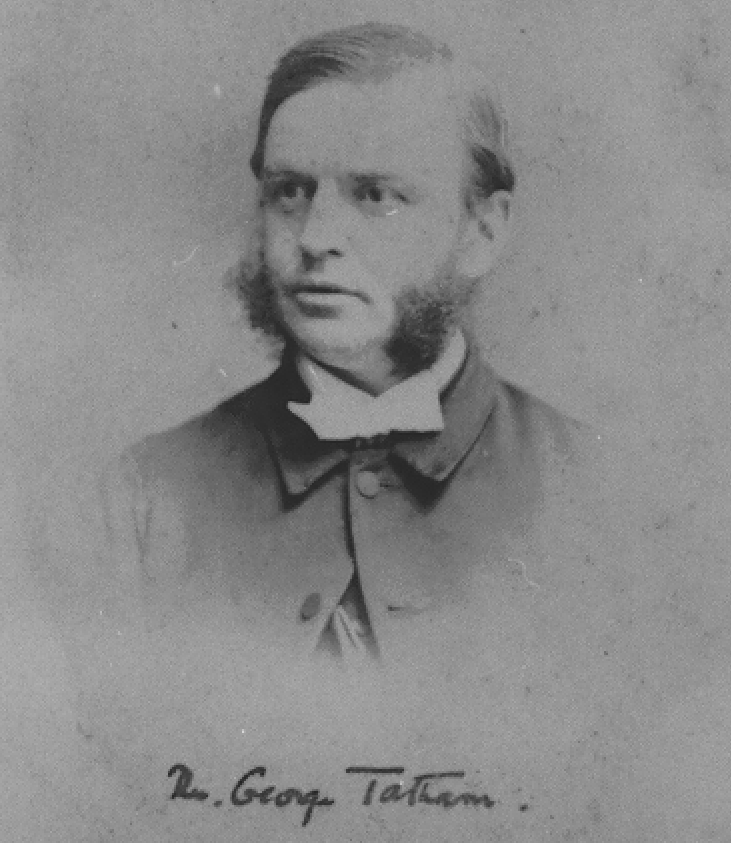
Pasted onto the inside cover of NRO PD621/23, the first Preacher’s Book of the Revd. George Edmund Tatham, is part of a press cutting from an unidentified newspaper headed:
“Happy are the people that are in such a case.”
and dated at the bottom by GT in ink "1860 AD”
He had also corrected the text in several places having possibly supplied the entire report himself in the first place. A corrected and slightly longer version of that text was found in the 28th July issue of the Norfolk Chronicle:
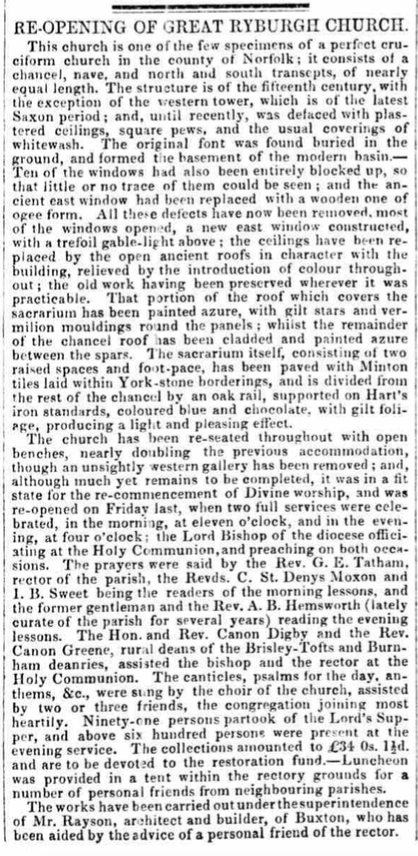
From a holding at Lambeth Palace and now accessible from “Church plans online” there is a plan illustrating the intended completion of work arisinf from a grant application made for funds towards the new seating arrangements from the "Incorporated Society for Promoting the Enlargement, Building, and Repairing of Churches and Chapels" or I.C.B.S.

It shows the present 4 transept windows ( the G& F Smith memorials) still blocked. The North Transept Norman window openings can be seen on Robert Ladbrooke’s lithograph of the Church c. 1823, about 35 years prioe to George’s arrival in Ryburgh. Unfortunately there is no view from the West or of the South Transept to indicate any further early blocked windows!

Nevertheless, according to the press release, the restoration must have unblocked 6 of those windows that are now shown open on Geoirge Rayson's plan!
The plan also shows a number of other interesting features showing that at this date:
- The South and the North doorways were either both blocked up or the openings intended to house windows? It seems the only ways into and out of the church were the West door, (which then was larger than the current one) and the Priest's door in the Chancel.
- The rediscovered font was set in front of the blocked North door.
- There was a structure (possibly a former pulpit?) shown on the opposite side of the Chancel Arch to the new hexagonal pulpit
- The Buttes tomb is shown in a way that implys that it was still in-situ and complete?
When the Chancel roof was refurbished in 2017, none of the roofing over the Sacrarium remained. Some of the roof cladding over the Buttes tomb (which by 1864 had been demolished back to the wall in order to acommodate the new organ) survives beneath the plaster panels and suggests that the azure was of a green rather than a blue persuasion:
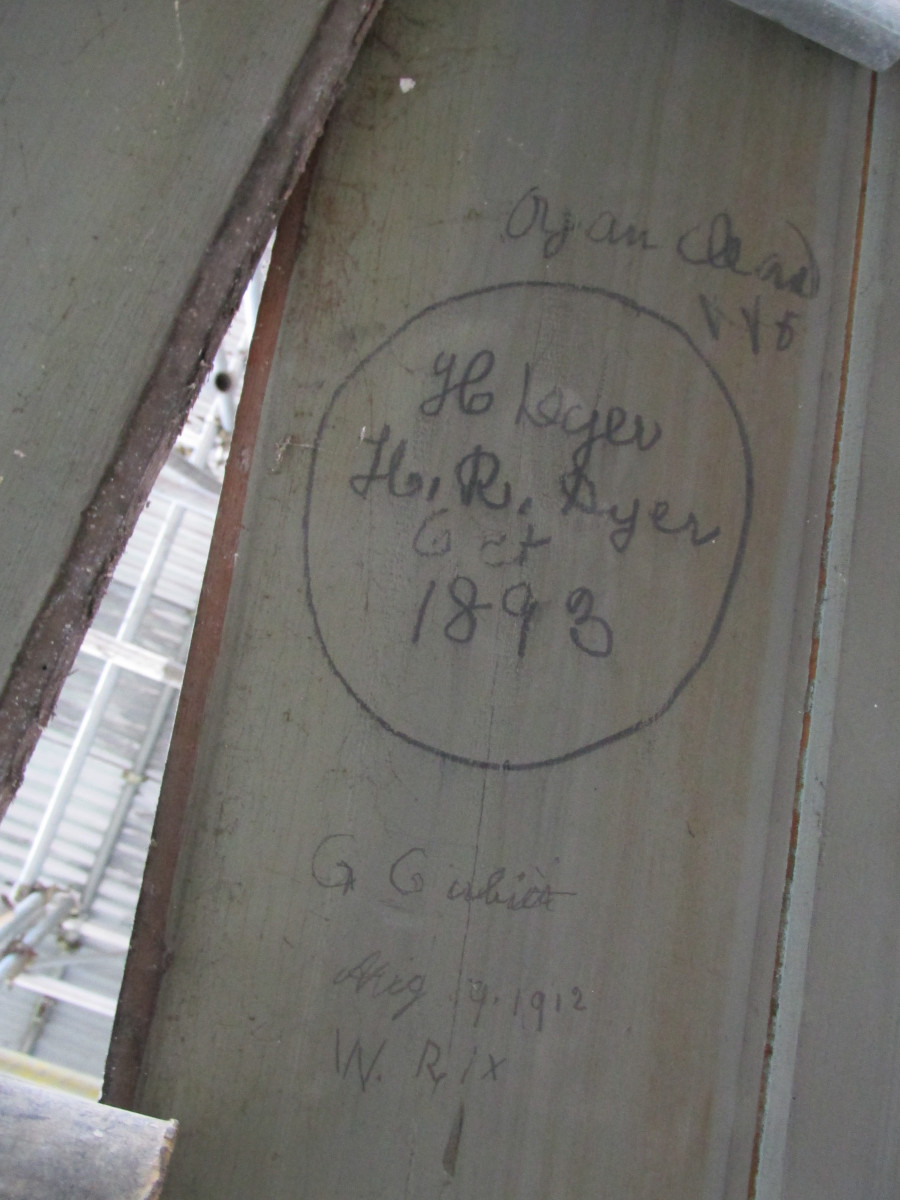
The 1893 signatures are likely be the date of the "organ cleaned", whereas the August 9 1912 date is when the Comper plaster panels were fitted, probably by Messrs Cubitt and Wix, and employees of Isaac Fisher the contractor for the Comper work.
To date we have found little or no sign of faculty applications, plans or accounts for any of the work save the corroboration of the various village entries in Harrod’s, White’s and Kelly’s Directories of the period. These texts put the cost at over £1000 and confirm the light and colourful nature of the restoration, noting specifically the stained glass of the new East window by Wailes of Newcastle. This window from 1863, removed at the time of the Comper work, apparently survived in the Rectory Cellar until the property was sold off by the Diocese, at which time it went missing...... its whereabouts is still unknown!
WHITE"S 1864
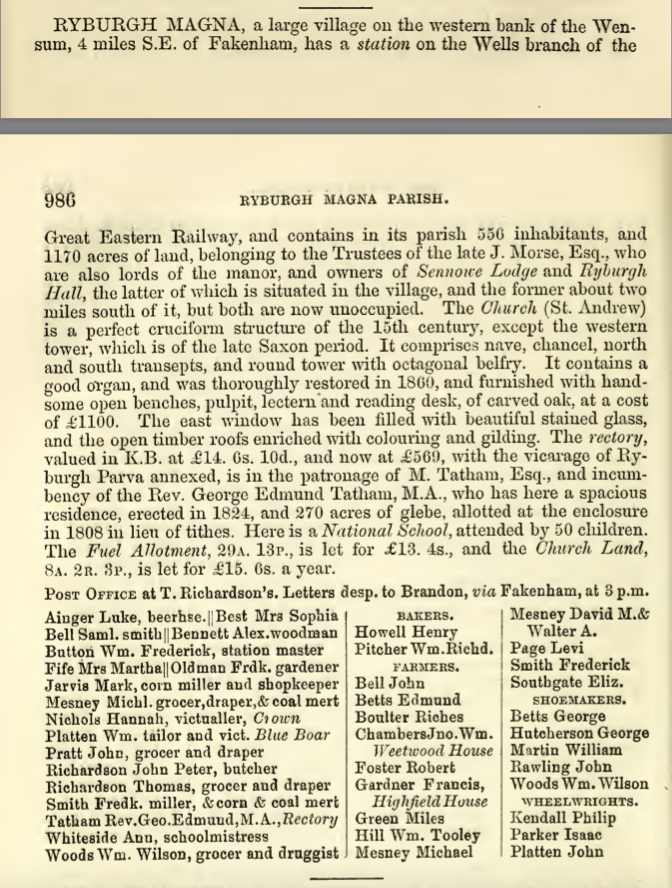
KELLY"S 1879
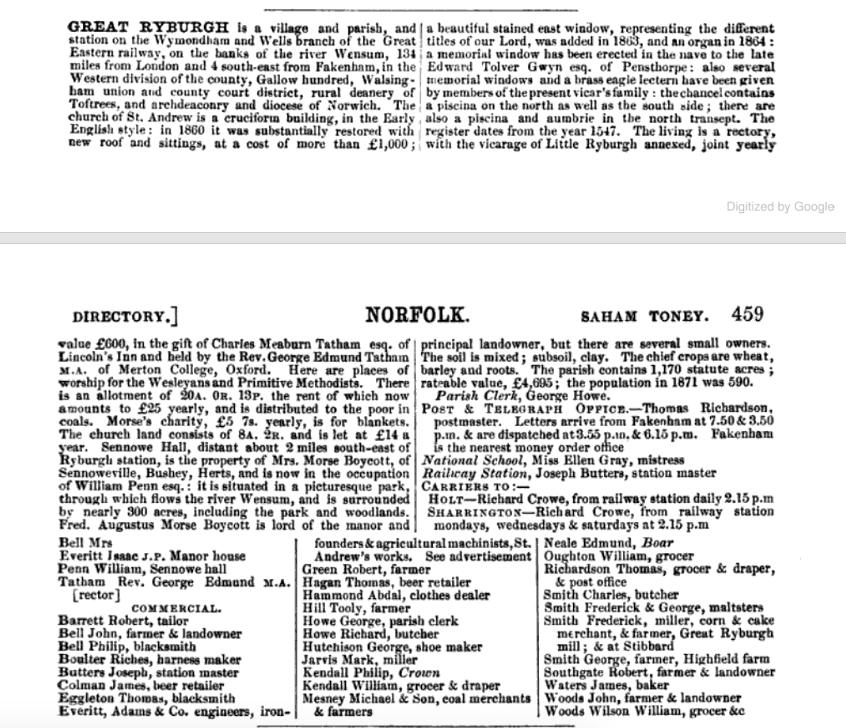
We are fortunate that a photpostcard image from one of the very first village sets survives and shows the church pretty much as George Tatham left it albeit some 50 years after he came:
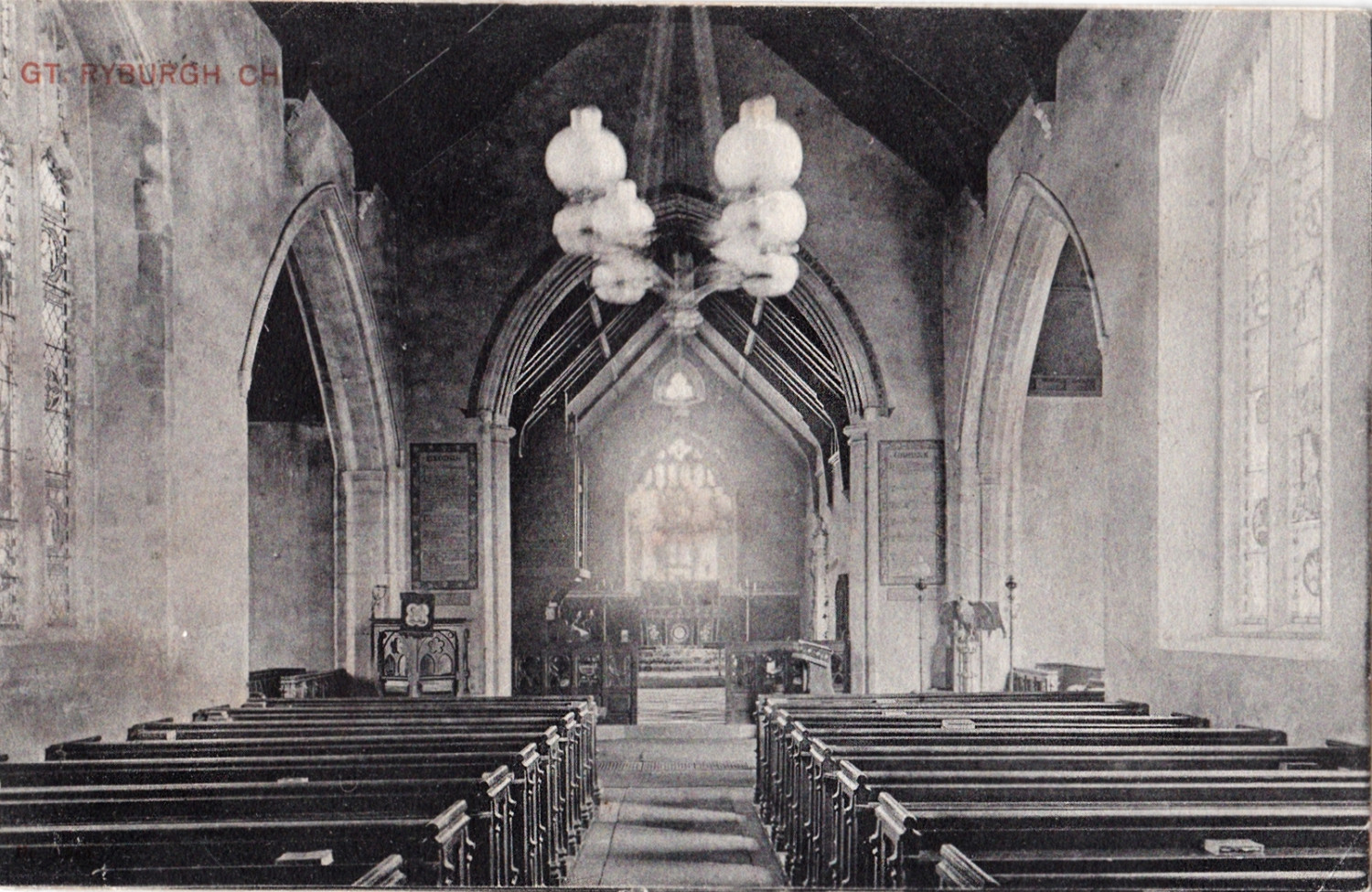
************
In 1869 after this major undertaking, George Tatham’s next project was the enlarging of the churchyard and the provision of a new wall and gates. He writes into the same preacher’s book the following account:
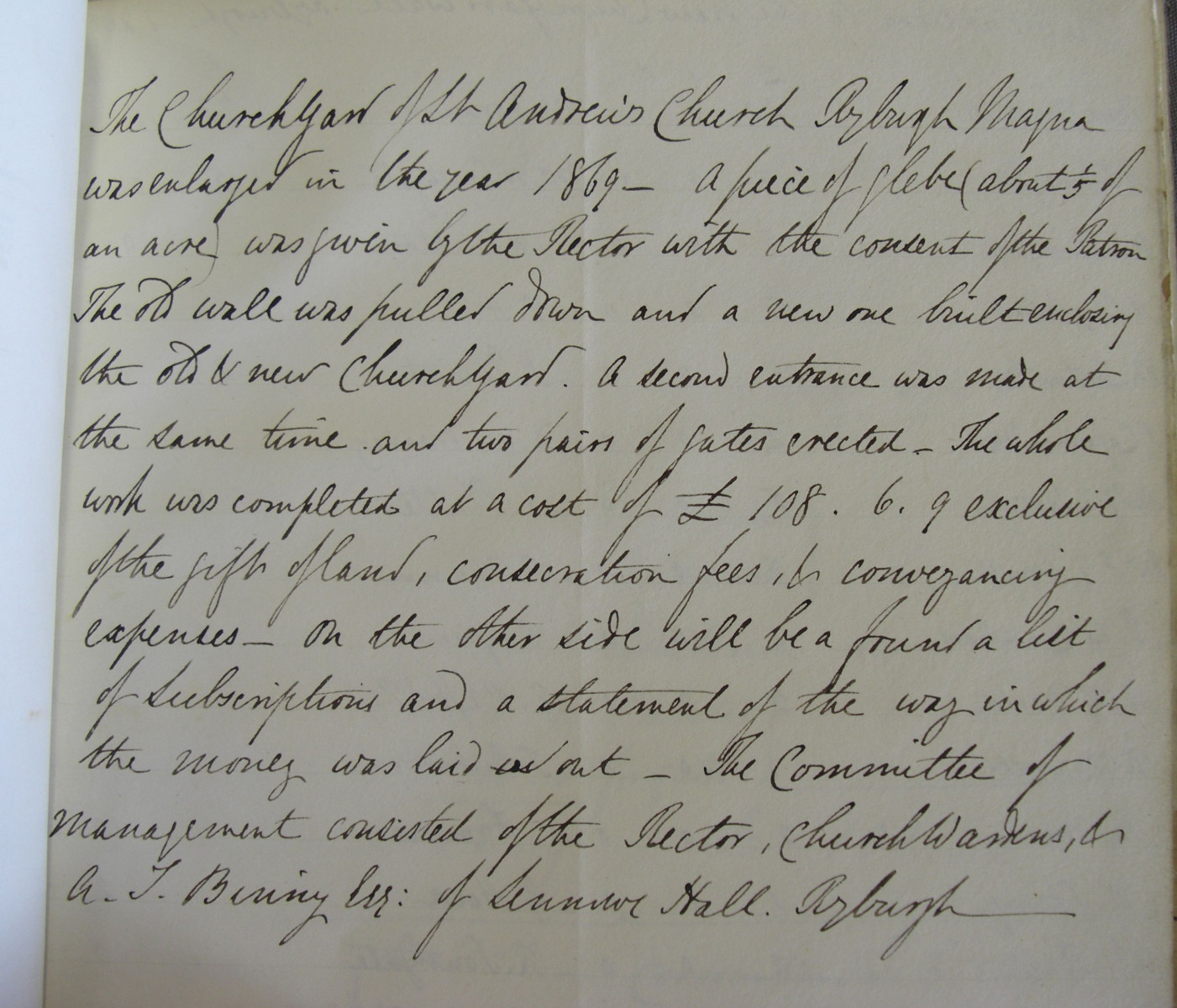
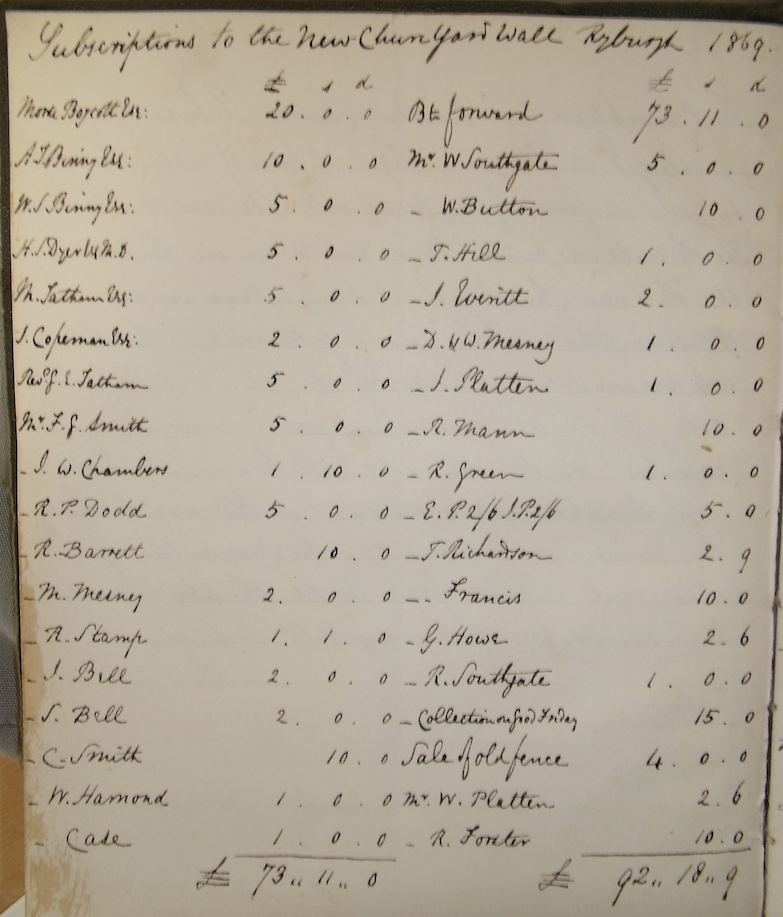
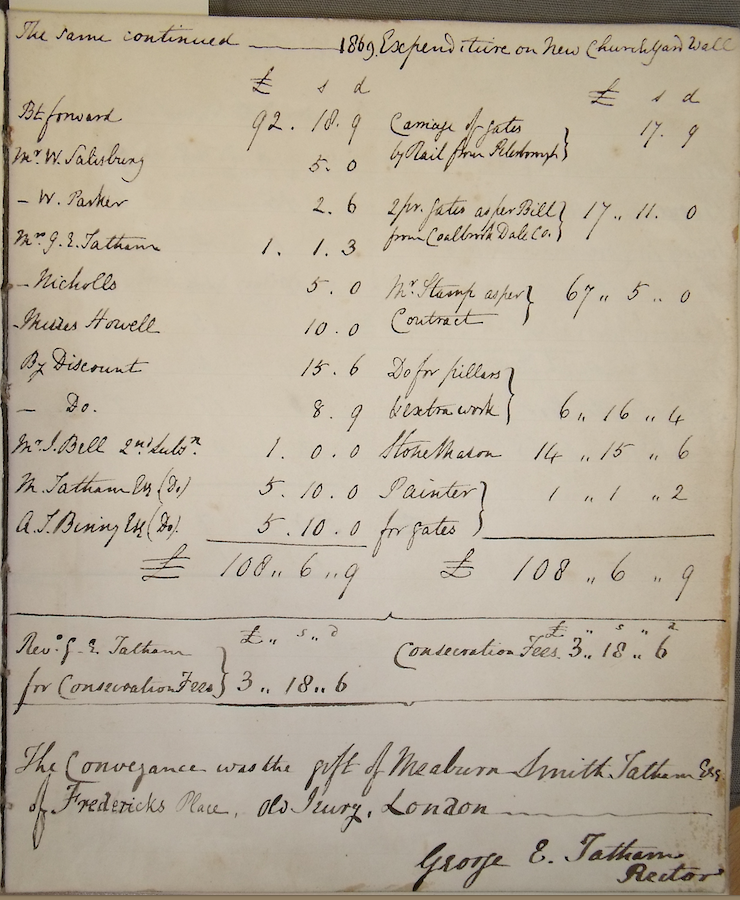
George Tatham continued to be a popular incumbent with his other major contribution to the village being the rebuilding and enlargement of the National School in 1872 and it is by chance that a fragment of his "Almanack" for 1884 found amongst a collection of papers collected by his son F.H.Tatham and left behind in the vestry, indicates his state of mind after more than 25 year in the Parish as its Rector:

The local papers reported the following on June 4 1884:
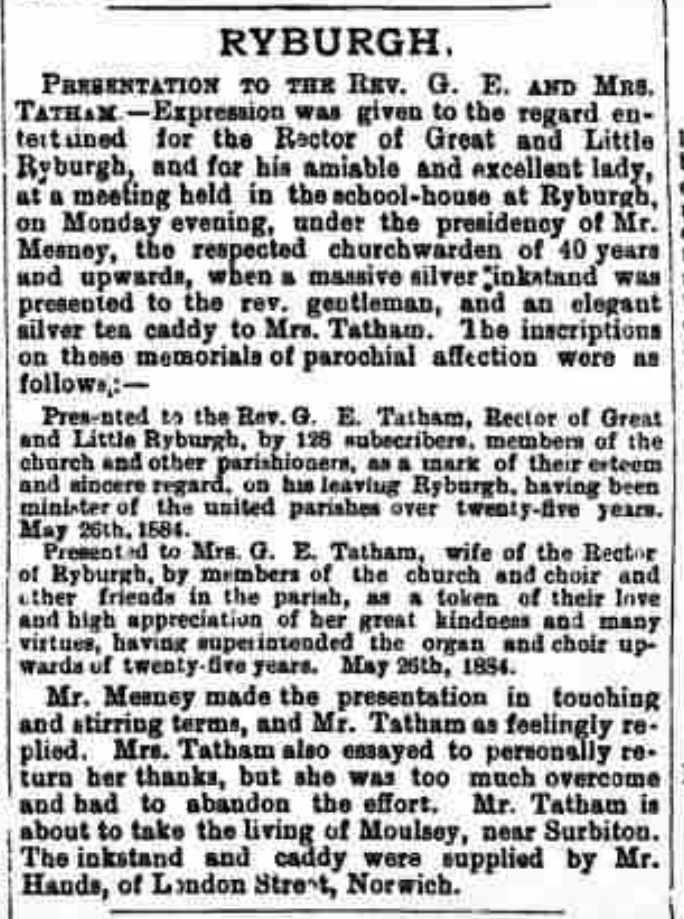
The following certificate was found as a draw lining when the old St John's Hall (now the chip shop) was cleared out at the turn of this century:
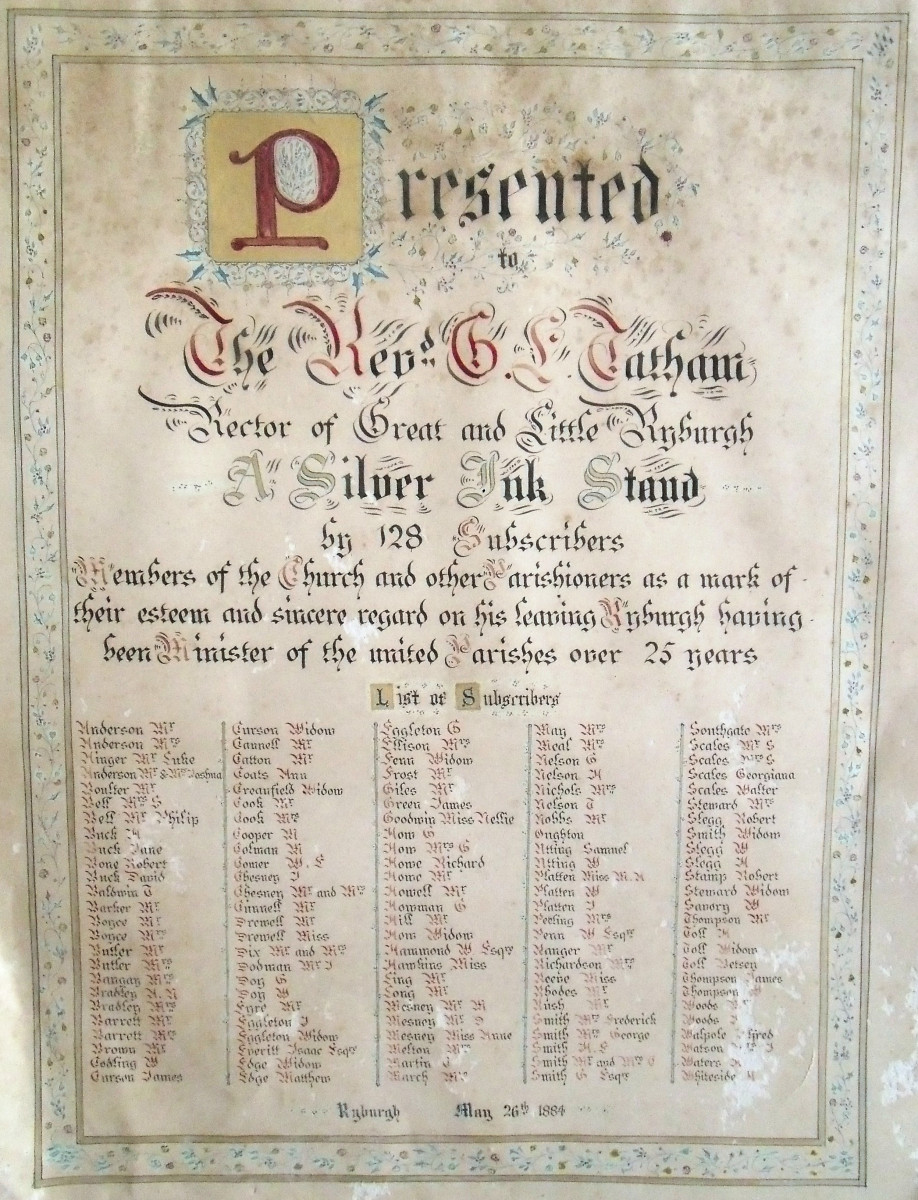
It is now preserved in the Norfolk Record Office.